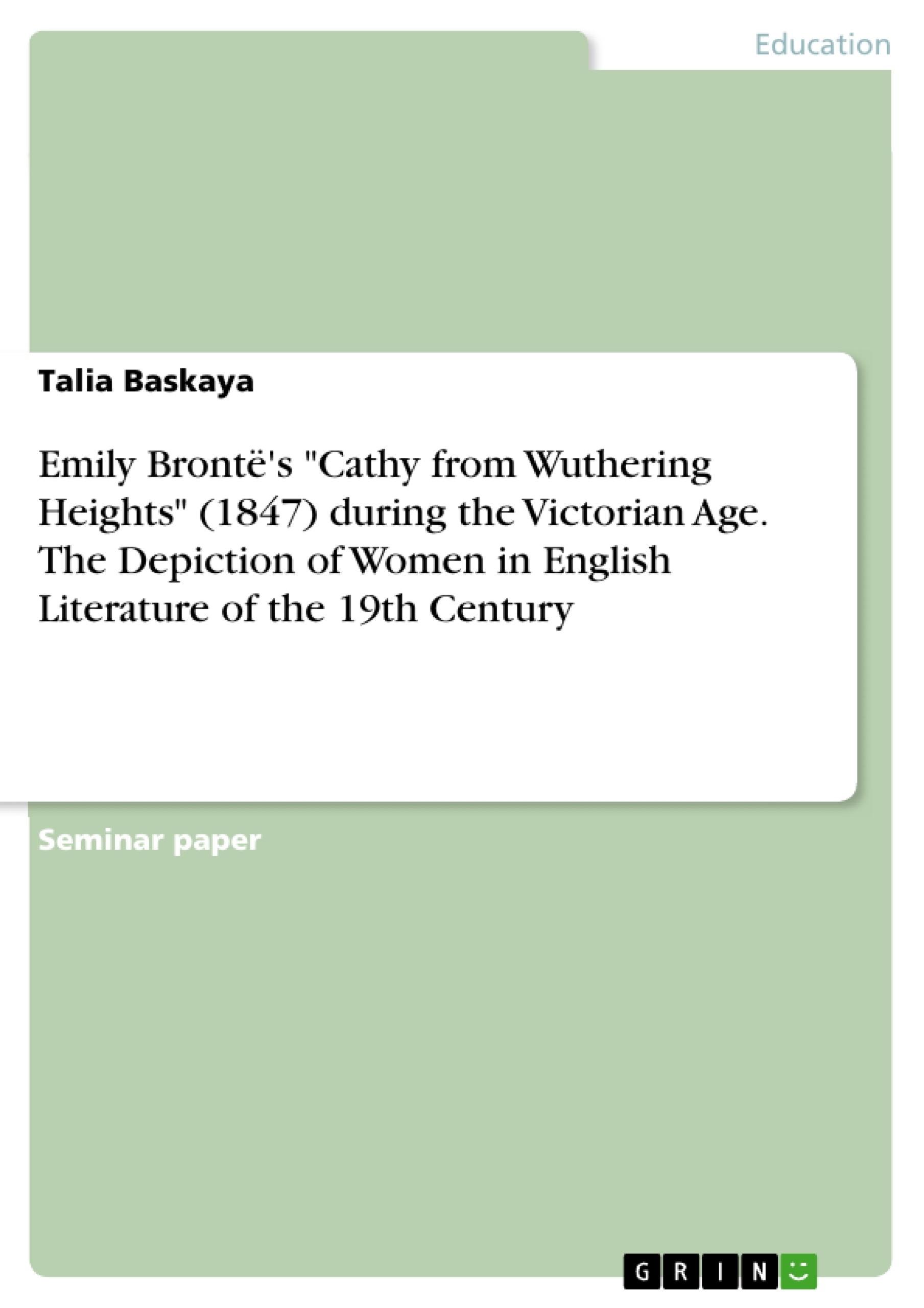The following term paper will deal with the several depictions of female protagonists in English literature while the focus will be on Catherine Earnshaw, the female protagonist in Emily Brontë's "Wuthering Heights", and the typical English characteristics. The character development will be analyzed in context of the concept of gender and compared to other English female protagonists. In order to so, firstly the principle of gender itself will be delineated, subsequently the characteristics of the Victorian Age will be briefly summarized. Thereafter, Catherine Earnshaw’s character development will be elaborated and its similarities with and differences from other female protagonists will be emphasized.
As for literature figures nowadays, Emily Brontë’s "Wuthering Heights" is a prime example for classic English literature of the Victorian Age, whereas coeval critics refused to accept the novel as appropriate according to the predominant behavior patterns and norms. Its solid position in classic English literature was not foreseeable then since Ellis Bell – the Brontë-sisters used to write under pseudonyms at the beginning – had been criticized for his violent and ruffian storyline and characters which were unconventional and shocking for a society in which it was not common to have or depict such strong and blatant feelings.
In contrast to the passionate and impulsive love story which also includes revenge, hate and violence, other authors such as Charlotte Brontë published works that were typical and appropriate for the mindset of Victorian people and managed to achieve purely success and admiration, for instance the governess-novel "Jane Eyre". Also Jane Austen’s "Pride and Prejudice" which has been published before the Victorian Age and tells the love story between Elizabeth Bennett and Fitzwilliam Darcy abides the common norms and fits into the sophisticated world Austen presents.
Table of Contents
- Introduction
- Theoretical Background
- The Concept of Gender
- The Depiction of Women in the Victorian Age
- Emily Brontë's Catherine Earnshaw in the Victorian Age
- Emily Brontë
- Wuthering Heights
- Catherine Earnshaw – The Most Untypical Female Victorian Protagonist
- Conclusion
- Works Cited
Objectives and Key Themes
The term paper aims to analyze the depiction of women in English literature, specifically focusing on Catherine Earnshaw from Emily Brontë's Wuthering Heights and comparing her to other female protagonists of the Victorian Age. This analysis will highlight the character development in context of the concept of gender and the characteristics of the Victorian Age.
- The social construct of gender in the Victorian Age
- The depiction of women in English literature
- The character development of Catherine Earnshaw
- The comparison of Catherine Earnshaw to other female protagonists
- The influence of gender roles on the representation of female characters
Chapter Summaries
The introduction provides an overview of Wuthering Heights as a classic English novel of the Victorian Age and discusses the societal context surrounding its publication. It highlights the contrasting reception of Brontë's work compared to other authors like Charlotte Brontë and Jane Austen, emphasizing the significance of analyzing female protagonists to understand societal perceptions of women.
The theoretical background section delves into the concept of gender, differentiating between biological sex and social gender roles. It discusses the evolution of the term "gender" and its broader implications, especially regarding gender identities beyond the traditional binary.
The chapter on Emily Brontë and Catherine Earnshaw focuses on her character development and how she breaks traditional norms of female Victorian protagonists. It analyzes her unique personality, her unconventional choices, and her impact on the novel's themes of love, passion, and societal constraints.
Keywords
The main keywords and focus topics of the term paper include gender, Victorian Age, English literature, female protagonists, character development, Wuthering Heights, Emily Brontë, Catherine Earnshaw, societal norms, and gender roles.
- Quote paper
- Talia Baskaya (Author), 2017, Emily Brontë's "Cathy from Wuthering Heights" (1847) during the Victorian Age. The Depiction of Women in English Literature of the 19th Century, Munich, GRIN Verlag, https://www.hausarbeiten.de/document/513418


